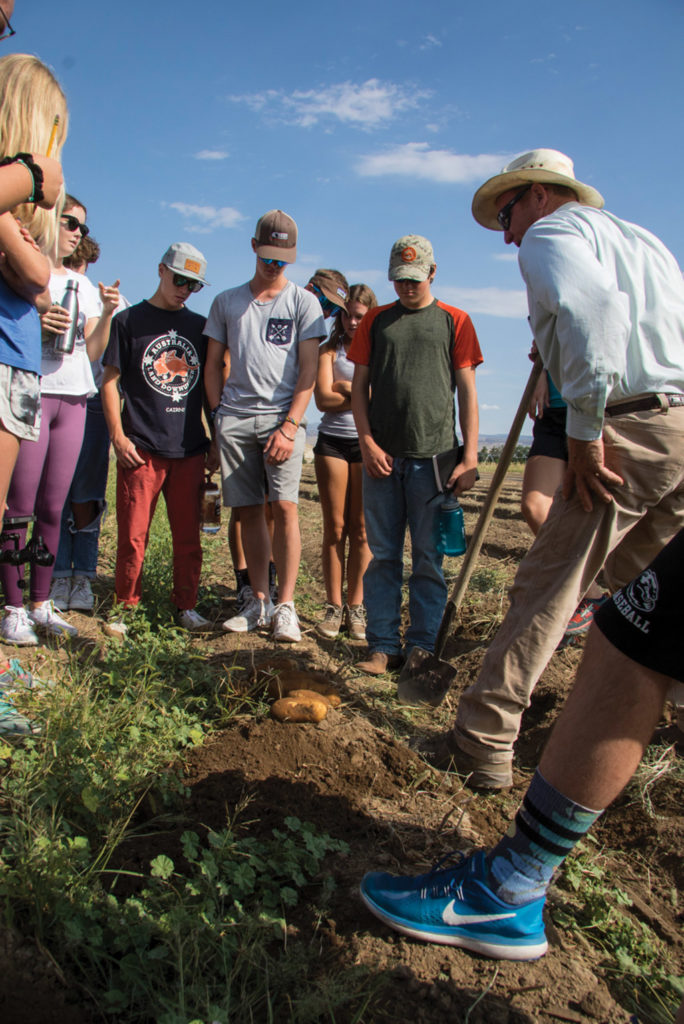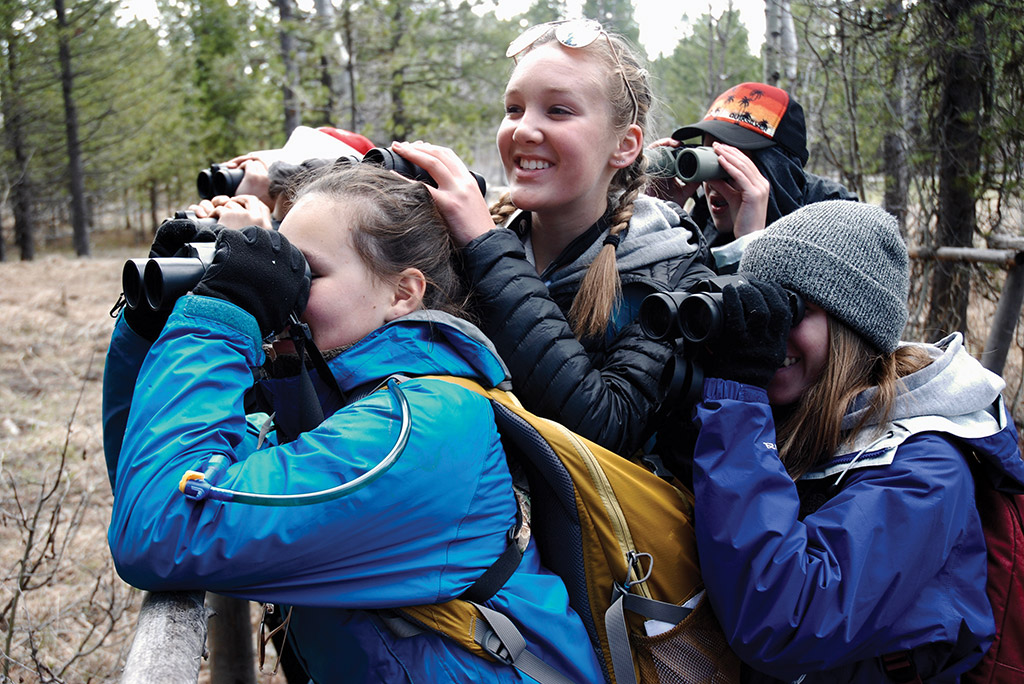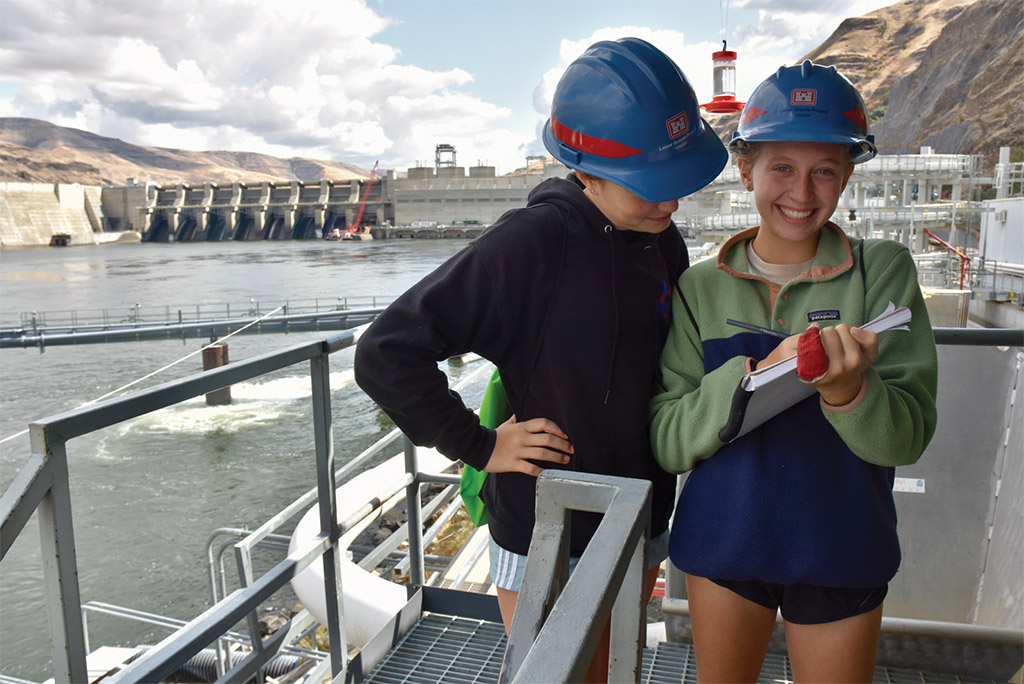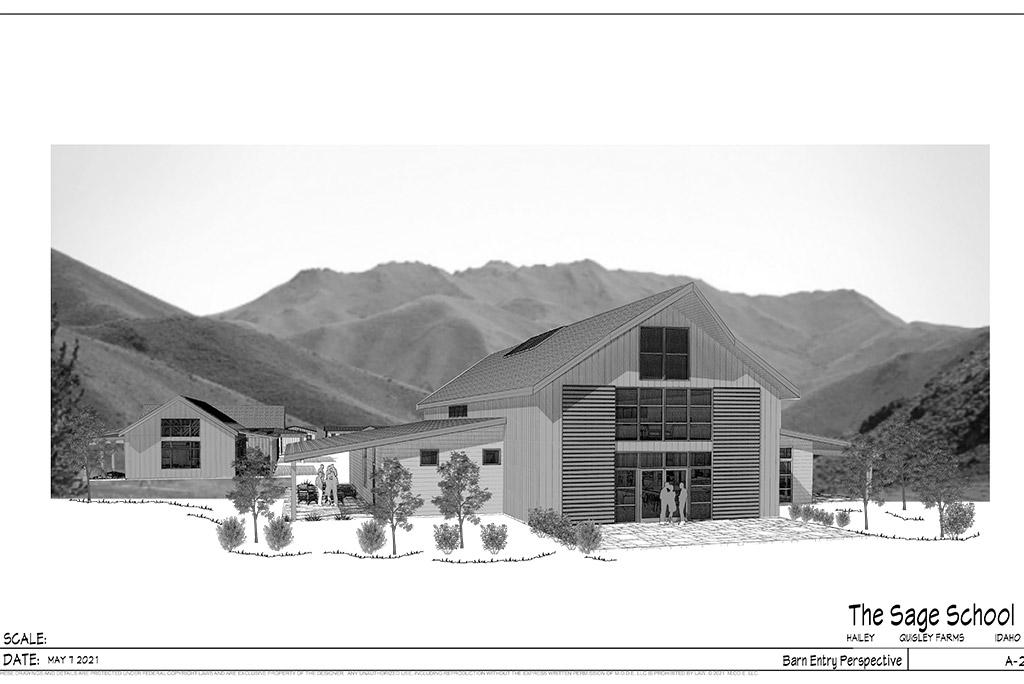Nathan Kolar watched as a great blue heron winged its way above freshly turned dirt at the edge of a 1,200-acre conservation easement out Quigley Canyon. He stopped at a weathervane planted at the edge of what will become The Sage School’s new campus and gestured to the surrounding hills.
“This makes me so excited,” said Kolar, who teaches Spanish and human ecology at the school. “Many of us live in the Wood River Valley because of the views, and from this school, we’re going to have 360 degrees of mountain views. Plus, we just saw a blue heron fly over. The opportunity to interact with nature is right out our front door, and that’s a big part of the mission of the school.”

Sage School students watch the unearthing of organic potatoes at Kings Crown Organic Farm in King Hill, Idaho, during their Food System field study.
In October 2021, the barn that will serve as the centerpiece of the campus will be trucked from Mancos, Colorado, where Wind River Timberframes is hand-cutting the timber with mallets and chisels and framing it, alongside three other classrooms.
Three modular buildings The Sage School currently occupies near Friedman Memorial Airport will be moved to the site in time for the school’s 96 students to begin school in Fall 2022.
The barn will sport batten wood and stone on the outside and exposed timber trusses inside. It will house administrative offices and a community kitchen to be used by students and the community. One hundred people will be able to fit into an arena for assemblies, dances and other events.

Sage School students observe ruffed grouses’ spring mating dances at Harriman State Park on the Central Flyway.
Eventually, two of the new classrooms will be transformed into a woodworking and metal shop and an art studio.
The school’s proximity to Bloom Farm will enable the students to learn about agriculture and botany. And, if The Hunger Coalition needs a volunteer crew to harvest something ahead of a storm, there’ll be 100 students ready to lend a hand. The proximity to Wood River High School could offer cross-pollination in afterschool programs like robotics.
“The Sage School has been part of the conversation since the beginning of the talks about the Quigley Farm development. To see it go from theoretical to tangible is so exciting,” said Head of School, Harry Weekes.
A big part of that conversation was integrating The Sage School students with the community, including the Wood River Land Trust and other nonprofits that hope to relocate to the neighborhood.

Sage School students, shown here at the Lower Granite Lock and Dam on the lower Snake River, study differences between wild and manipulated rivers and meet with experts in the field including dam managers, Bonneville Power Administration (BPA) representatives, grain shippers, tribal leaders, fishermen, rafters, and environmental conservationists.
“The kitchen, for instance, will let the students prepare food for their field studies, Souper Supper-type dinners for the community. If we get a big load of basil, for instance, we can turn that into pesto and give it to The Hunger Coalition so they can distribute it to families in need. In October, when we get thousands of pumpkins, we will be able turn those into pumpkin pie,” Weekes said.
Engaging the students with the community teaches them about how they relate to community and place at a time they’re beginning to take a hard look at themselves, Weekes said.
“Our central focus is human ecology—how we relate to our built and natural environment and our social environment. We hope that students who engage with their community during school will continue to do so after school.”
The project will cost between $6.5 million and $7 million. The Sage School’s $4.5 endowment will ensure the sustainability of the school, providing more money for teachers and funding for the field trips that are such a big part of the school’s curriculum.
“We have a flexible tuition model that sets tuition for each student based on financial needs and capacity,” said consultant Carter Cox. “We work with each family to figure out what they can pay so we set each family’s tuition at a different rate.”
Weekes believes funding the program should be a no-brainer: “Something is emerging here that we hope will be a value for the whole community.”


